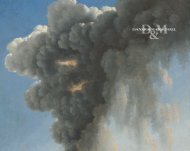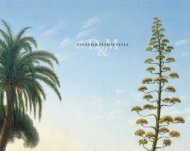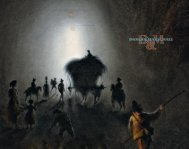Catalogue 2010 - daxer & marschall
Catalogue 2010 - daxer & marschall
Catalogue 2010 - daxer & marschall
You also want an ePaper? Increase the reach of your titles
YUMPU automatically turns print PDFs into web optimized ePapers that Google loves.
CARL FRIEDRICH LESSING<br />
A Grove of Oak Trees<br />
Carl Friedrich Lessing<br />
(Breslau 1808 - 1880 Karlsruhe)<br />
A Grove of Oak Trees, c. 1835-8<br />
Oil on canvas<br />
Signed with the initials lower left<br />
C F L<br />
32 x 37 cm<br />
Provenance:<br />
Josef Neckermann collection, uSA<br />
28<br />
In 1827 Carl Friedrich Lessing and the painter Johann Wilhelm Schirmer (1807-63) founded the<br />
‘Landschaftlicher Komponierverein’ 1 , a group of artists dedicated to landscape painting. This<br />
followed the example of the history painters. In his memoirs Schirmer writes: Our lively interest<br />
in landscape painting moved us to form an association with the objective of producing a design for<br />
a landscape composition on an approximately two-weekly basis. 2 This move, combining strong<br />
overtones of Romanticism with close scientific study of nature, led to the birth of the Düsseldorf<br />
School of Landscape Painting. The School was influential outside Germany and in Scandinavia and<br />
the united States, particularly in the 1830s and 1840s.<br />
Lessing remained faithful to the motifs of his native surroundings – unlike many of his<br />
colleagues who looked to Italy for inspiration. His depictions of the landscapes of the Eifel, Spessart,<br />
Harz Mountains and the Düsseldorf region brought him significant recognition. In August 1836<br />
he visited the Solling, a range of hills to the east of Düsseldorf and gave an enthusiastic account of<br />
the natural beauty and solitude of the area, praising its ‘ancient trees’. He produced a corpus of<br />
drawings 3 on this visit that served as preparatory studies for a number of paintings, among them<br />
The Thousand-Year Oak, executed in 1836. 4 It is very probable that he drew on this group of drawings<br />
when working on the present painting.<br />
Lessing’s work combines highly detailed observation of nature and effects of light with a<br />
tendency to Romantic hyperbole. A similar Romantic interpretation of landscape can be found in<br />
the Prater landscapes of Ferdinand Georg Waldmüller.<br />
Lessing had broken off his studies at the Bauakademie in Berlin to enrol at the Academy of<br />
Arts. He completed his studies in 1823 and began to focus on landscape painting. He achieved his<br />
first public success at the academy exhibition in Berlin in 1826 with his Churchyard with Gravestones<br />
and Ruins. In the autumn of the same year he and fellow-painters Julius Hübner, Carl Sohn and<br />
Eduard Hildebrandt moved to Düsseldorf, following in the steps of Lessing’s professor, Wilhelm von<br />
Schadow (1788-1862), the newly-appointed director of the Düsseldorf Academy. under Schadow’s<br />
direction the Academy adopted landscape painting as an academic discipline. In 1839 Schirmer<br />
took over from Schadow as director of the Academy. Both Lessing and Schirmer are today regarded<br />
as leading representatives of the Düsseldorf School of Landscape Painting.<br />
1. Martina Sitt, ‘Von einem der Auszog, …(der) aber von der Geschichte eingeholt wurde - C. F. Lessing - eine Einführung’, in Carl<br />
Friedrich Lessing. Romantiker und Rebell, exhib. cat., Kunstmuseum Düsseldorf, 14.5.-30.7.2000, and Landesmuseum Oldenburg,<br />
Augusteum, 24.8.-22.10.2000, Bremen 2000, p. 14.<br />
2. Der Landschaft mit lebendigem Interesse zugewandt, beschlossen wir unter uns einen Verein zu bilden, wonach wir uns verpflichteten, etwa alle 14 Tage<br />
eine Komposition in Zeichnung vorzulegen: Paul Kauhausen, Die Lebenserinnerungen des Johann Wilhelm Schirmer, Krefeld 1956, p. 60.<br />
3. See Vera Leuschner, Carl Friedrich Lessing 1808-80. Die Handzeichnungen, Cologne 1982, II, pp. 1004-5, L65-70.<br />
4. Graf Raczynski collection, Poznan, and replica executed in 1837, Städelsches Kunstinstitut und Städtische Galerie, Frankfurt.






